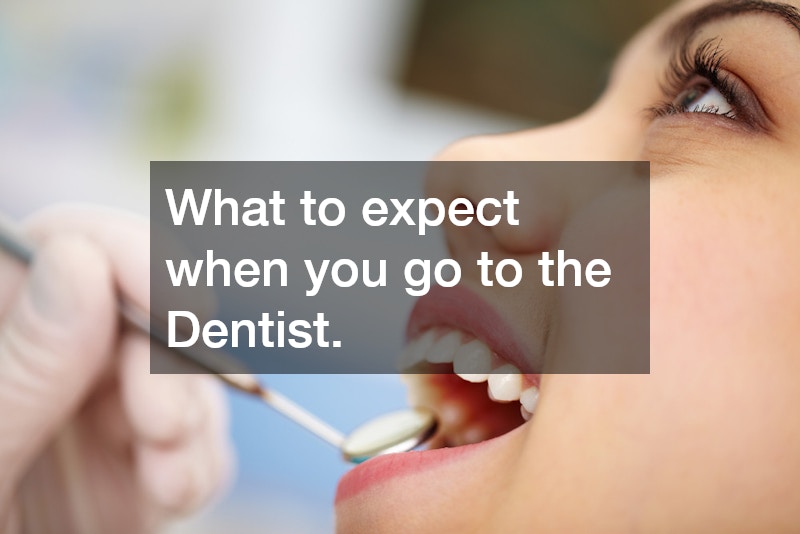Visiting the dentist can bring a mix of emotions. For some, it is a routine part of maintaining good health. For others, it can cause a bit of anxiety or uncertainty. No matter how you feel, knowing what to expect can help you feel more comfortable and confident before your next appointment. A trip to the dentist today is far more advanced and patient-focused than it used to be.
With modern tools and techniques, a simple visit can help you maintain your oral health, improve your appearance, and even boost your overall well-being.
The Check-In and Initial Assessment
When you arrive at the dental office, you will first check in at the front desk. You might fill out or update some forms, usually covering your medical history and insurance information. This information helps the dentist understand your background and identify any risks or conditions that might affect your treatment.
Once called back, a dental assistant or hygienist will usually begin by taking X-rays. These images allow the dentist to see what is happening beneath the surface of your teeth and gums. They help detect cavities, bone loss, or hidden infections. X-rays are quick, painless, and a standard part of most checkups.
The Cleaning Process
Next comes the cleaning, which is often the most familiar part of a dental visit. The hygienist uses specialized tools to remove plaque and tartar buildup that regular brushing and flossing might miss. This process may involve light scraping along the gum line and between teeth. It might not always be comfortable, but it should not be painful. Afterward, your teeth are polished with a gritty toothpaste and finished with a professional flossing.
This stage is essential for preventing gum disease and tooth decay. The hygienist may also discuss brushing and flossing techniques with you to make sure you are maintaining your oral hygiene properly at home. Once your teeth are clean, it is time for the dentist to step in.
The Examination
The dentist will review your X-rays and inspect your mouth. They will check your teeth, gums, and soft tissues for any signs of decay, inflammation, or abnormal growths. They might also measure the depth of your gum pockets to detect early signs of gum disease. The exam usually takes only a few minutes but is critical for identifying issues before they become serious.
If you have concerns about your smile’s appearance, this is also the perfect time to bring them up. Many patients today visit a cosmetic dentist not just for health reasons but also to improve the look of their teeth. A cosmetic dentist can address stains, chips, or misalignments with treatments such as whitening, veneers, or bonding. These services can dramatically enhance your smile and confidence.
Addressing Alignment and Jaw Issues
During your appointment, your dentist might also evaluate your bite alignment or jaw position. If you have issues like crowding, gaps, or misaligned teeth, you could be referred to an orthodontist. An orthodontist specializes in correcting these problems using braces, aligners, and other devices. Straight teeth are not just about looks — proper alignment improves chewing, speaking, and long-term dental health.
Adults often think orthodontic care is only for children, but more people than ever are visiting an orthodontist later in life. Modern clear aligners make it possible to discreetly correct your smile without traditional braces. Your dentist can coordinate care with an orthodontist to ensure you receive the right plan for your needs.
Treatment Planning and Next Steps
If your dentist finds any problems — such as a cavity, cracked tooth, or gum inflammation — they will discuss treatment options. Depending on the issue, you might schedule a filling, crown, or deep cleaning. The goal is always to address problems early before they cause discomfort or become costly to fix. If more extensive cosmetic improvements are needed, your cosmetic dentist can provide solutions tailored to your goals, budget, and time frame.
In some cases, the dentist may recommend fluoride treatments or sealants for added protection, especially if you are prone to cavities. For patients with anxiety or sensitivity, sedation options are available to make the experience easier and stress-free.
Communication and Comfort
Modern dental offices prioritize patient comfort. Many now feature TVs, music, or even aromatherapy to create a calm environment. The dentist and staff are trained to explain every step of the process clearly so you understand what is happening and why. If something feels uncomfortable, you can always raise your hand or ask for a short break. Communication is key to ensuring your experience is positive from start to finish.
Preventive Care and Long-Term Health
After the cleaning and exam, your dentist will likely schedule your next appointment, usually six months out. Regular visits help keep your mouth healthy and catch potential issues before they worsen. Between appointments, maintaining good habits — brushing twice daily, flossing once a day, and using mouthwash — can make a big difference.
A healthy smile supports more than your appearance. Dental health is closely linked to overall health, influencing your digestion, heart health, and even energy levels. Seeing a dentist regularly is not just about fixing problems; it is about preventing them and improving your quality of life.
Final Thoughts
Visiting the dentist no longer has to be something you dread. With friendly staff, comfortable technology, and expert care, you can leave your appointment feeling refreshed and confident. Whether you are visiting for a routine cleaning, consulting a cosmetic dentist for a brighter smile, or meeting with an orthodontist to improve your alignment, each step contributes to your health and confidence.
When you know what to expect, a trip to the dentist becomes less of a mystery and more of an empowering step toward maintaining your best self.



